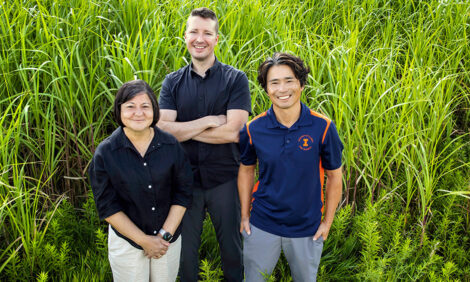



Tips for Managing New Bulls After Purchase
The purchase of a bull represents a major investment and regardless of price, the purchasing farmer invests trust and faith in the bull. So how can farmers ensure the bull lives up to these expectations?
The bull is relied on to get the females he runs with in-calf as quickly as possible, with each missed cycle representing a large reduction in kilos of calf weight at weaning time.
Beef Specialist Gavin Hill from SAC Consulting (a division of Scotland’s Rural College), outlined best practice guidelines on post-purchase management of a new bull, to help ensure he performs.
He urged farmers to purchase a new bull at least two months before he is needed.
“This will allow time for him to adjust to his new environment and living conditions.
“Bulls, especially if purchased from a show and sale, will probably be in very fit condition, some of which will need to be lost prior to being put with females,” explained Mr Hill.
“Once he’s home, try to avoid any dietary shocks. Putting him on a reduced and completely different diet can cause fertility issues and can also unsettle the bull.
"A good step is to ask the bull’s vendor for a bag of what the bull has been fed prior to sale, feeding him what he is used to will help to reduce risk of stress in his new surroundings.
“To slowly reduce his body condition score, and prepare him for his work, feed him reasonably well to start with, possibly purchasing or making up a good energy concentrate feed.
"He won’t be used to high forage levels. Then gradually reduce the amount of concentrates, while ensuring correct vitamin and mineral levels are maintained."
Mr Hill also had advice on housing and health of new bulls.
“If purchased at auction, the bull’s hair has probably been soaped. Once home, wash him down, to avoid the risk of skin irritation and possibly hair loss," he said.
“Pedigree breeders normally group house their young bulls after weaning, and your new bull is unlikely to be used to isolation. So don’t quarantine him in an area where he has little contact with what is going on roundabout him on the farm, or in a very confined dark pen.”
Mr Hill was speaking at a meeting of Clyde monitor farms, hosted by Andrew Baillie of Carstairs Mains in South Lanarkshire. Mr Baillie’s farm is one of the network of Quality Meat Scotland (QMS) monitor farms throughout Scotland.
Mr Baillie’s breeding herds, pedigree and commercial, are closed, other than to new bulls.
“We take herd health very seriously,” explained Mr Baillie. “So any purchased bulls are quarantined on arrival and tested to make sure they do not bring any disease problems onto the farm.”
Mr Baillie added his own tips for managing new bulls: “We make sure a new bull gets plenty of exercise before he’s turned out with females.
"Once he’s out of quarantine and before he’s put to work, we give him some company in a small paddock with a slope.
"To help strengthen his muscles and get his locomotion going, we feed him at the opposite end of the field to the water tank. The bull needs to be fit and strong before he starts working, to help reduce the risk of him injuring himself.”
Mr Hill recommended that a new bull should have a pre-breeding veterinary check to confirm he is physically correct, with no penile injuries or lesions, and that his semen is good.
Mr Baillie has learnt the value of this recommendation through bitter experience. In 2011 a new bull on his farm had worked, but was infertile, resulting in a 2012 calving percentage of 60. The previous year the herd had calved 96 per cent.
Acknowledgement of the inexperience of a young bull, which has not yet worked, was highlighted by Mr Hill. “He should serve his first female under supervision and on a surface where there is no risk of him slipping or injuring himself.
"Once he’s out with a group of females, keep an eye on him in the first few days, to make sure he’s working properly.
“Also with an unproven young bull, it may be asking too much to give him more than 20 females for his initial group. Many farmers run a bull with no more than 12 to 15 females in his first season, as he’s intended to be a long term herd sire, not a quick substitute.
"Regardless of how many females he runs with, make sure you monitor and note any returns. If more than fifty per cent return after first service, there is cause for concern.
“If the bull the new one is replacing is still on the farm and can still work, don’t get rid of him until the youngster has proved himself - back-up may be needed!”
Mr Hill reminded farmers of another important consideration for young bulls: “After a young bull has been removed from females, remember he is still growing and developing. So feed him a growing ration to help him achieve his full potential.
"If you don’t do this, you may limit his longevity and capability – sending you back for another bull much earlier than you had hoped!”
The management of the young bull post purchase is one subjects covered in a “Bull Selection Made Simple” guide produced by QMS. a copy of this guide can be found here.
QMS will be holding a bull management demonstration at Scotland’s Beef Event, being held at Mause of Mains Farm near Blairgowrie on 27 May. For more information visit www.scottishbeefassociation.co.uk/scotlands-beef-event


